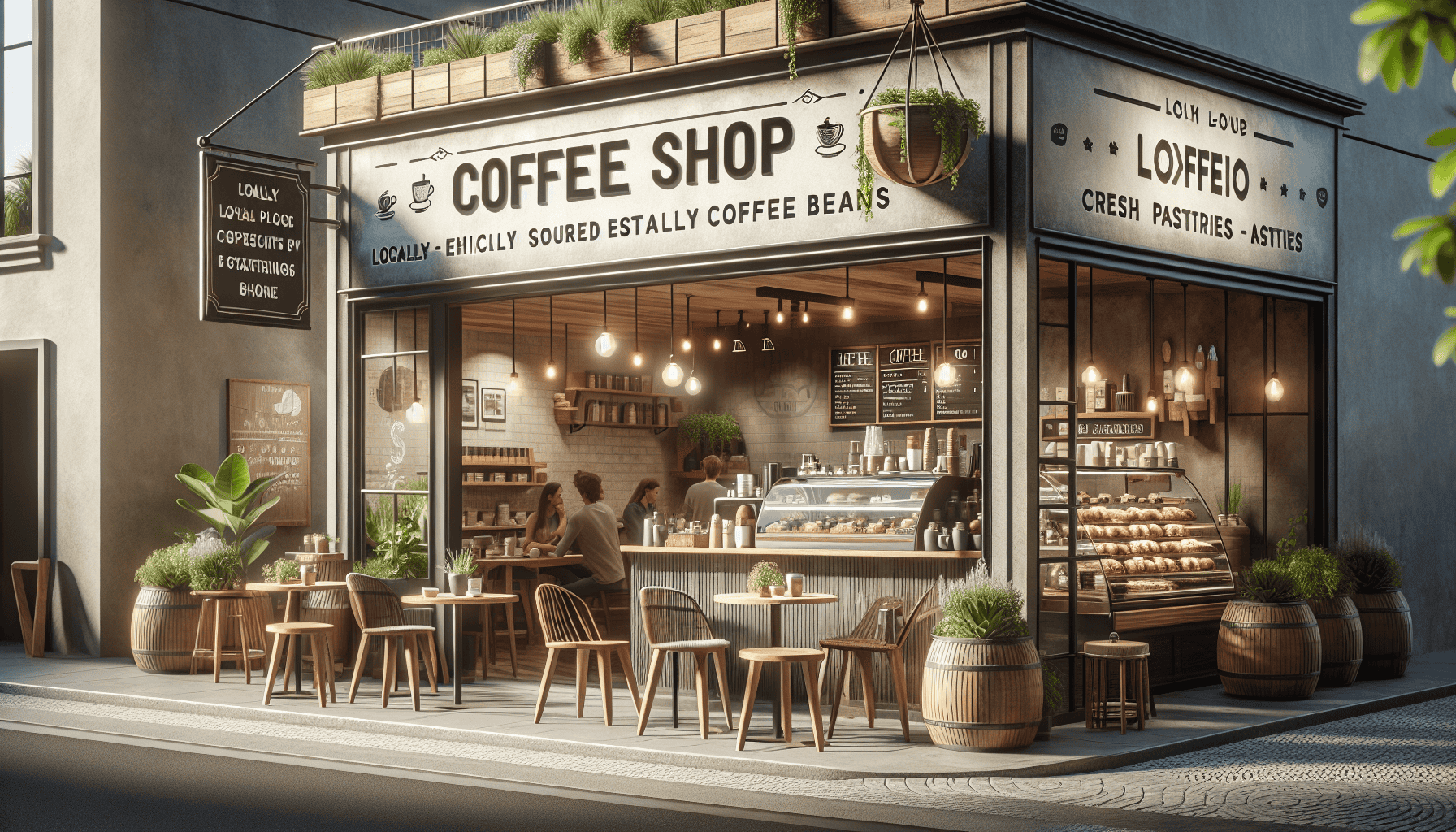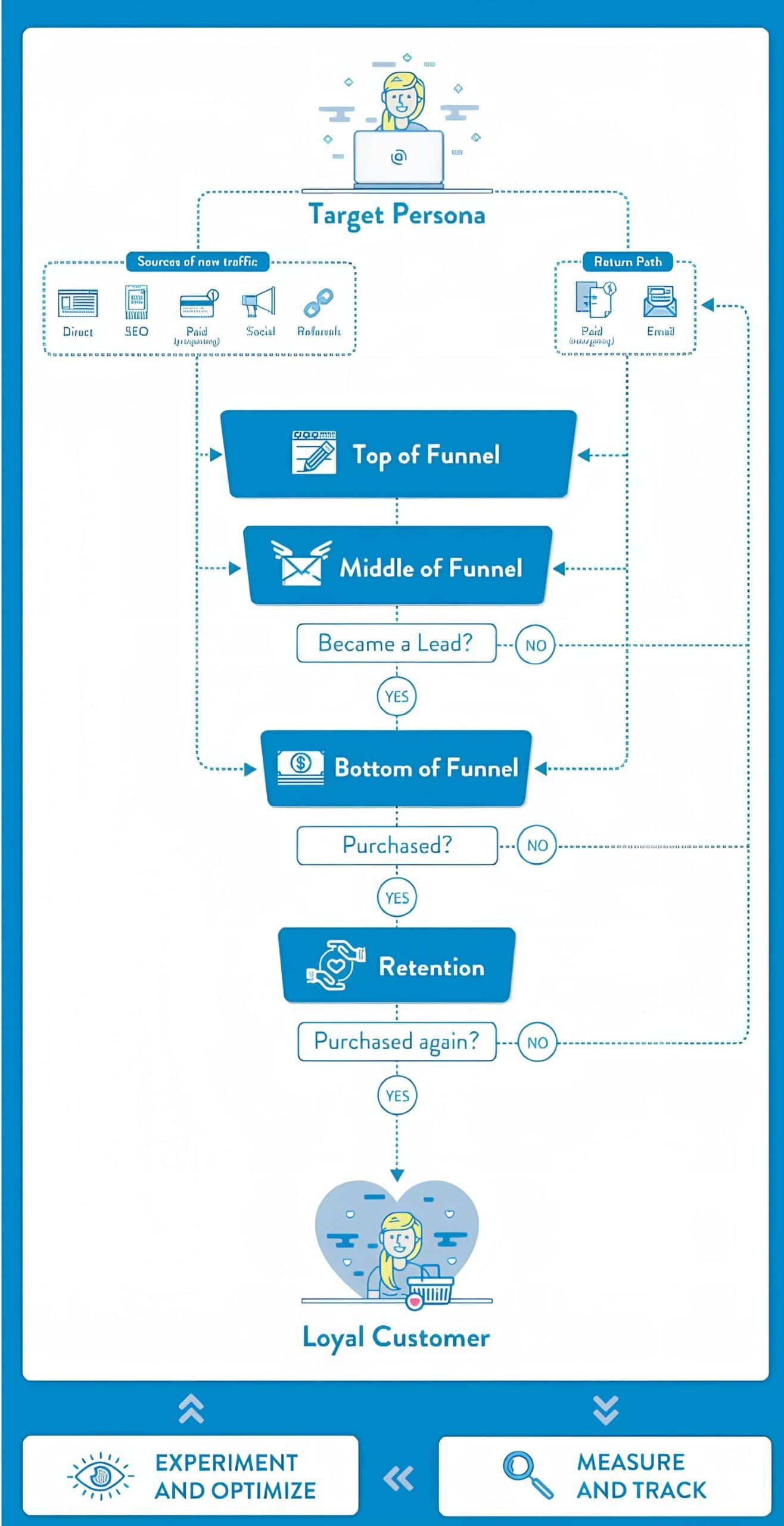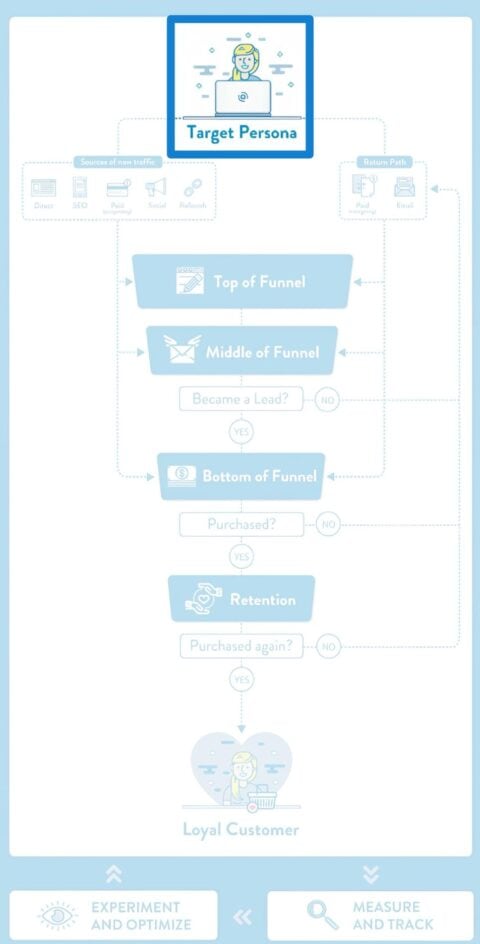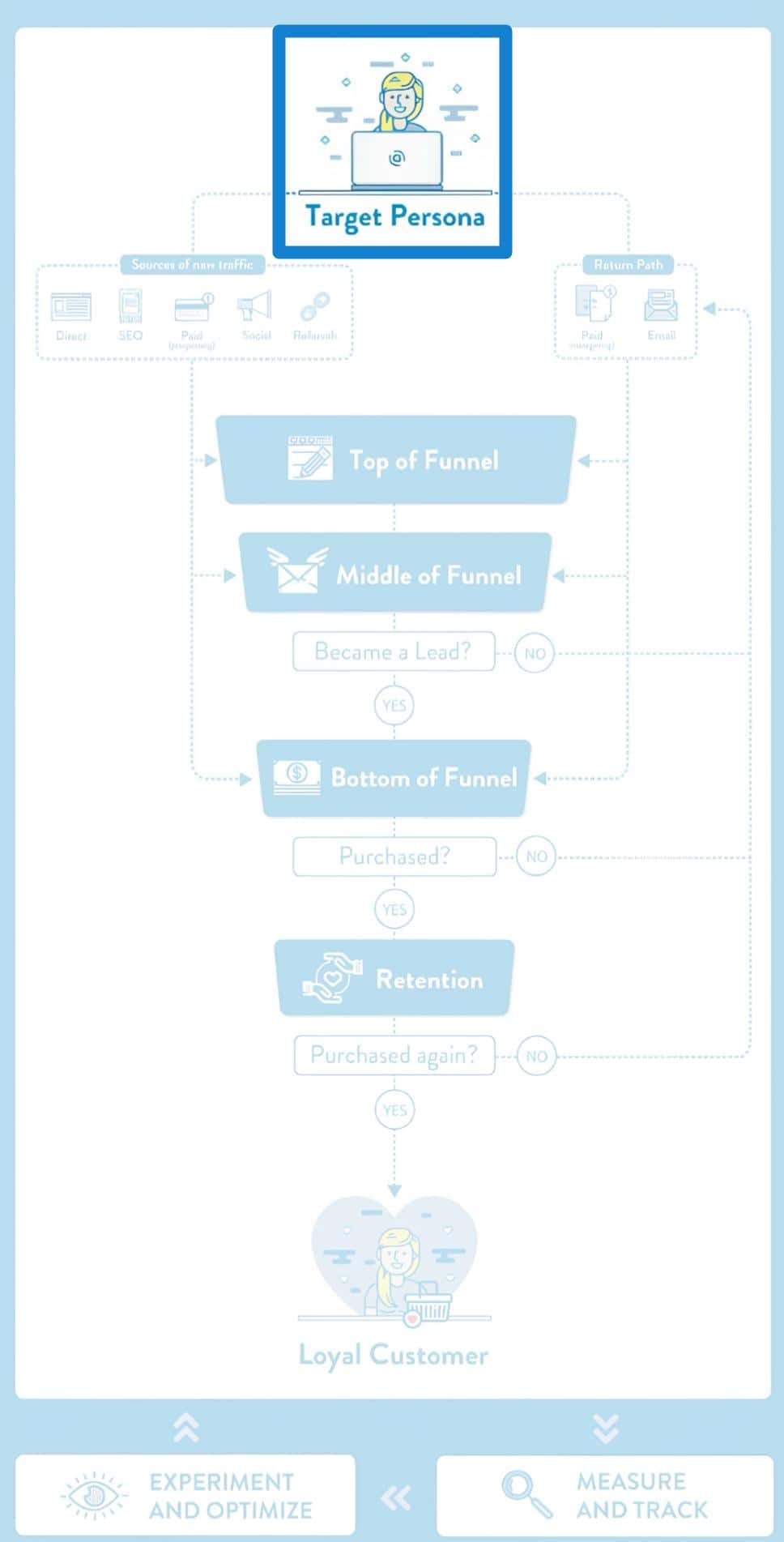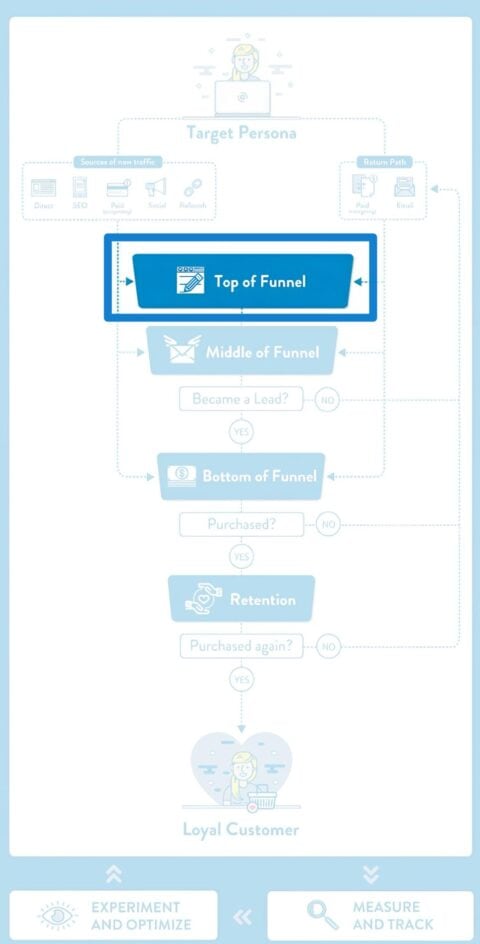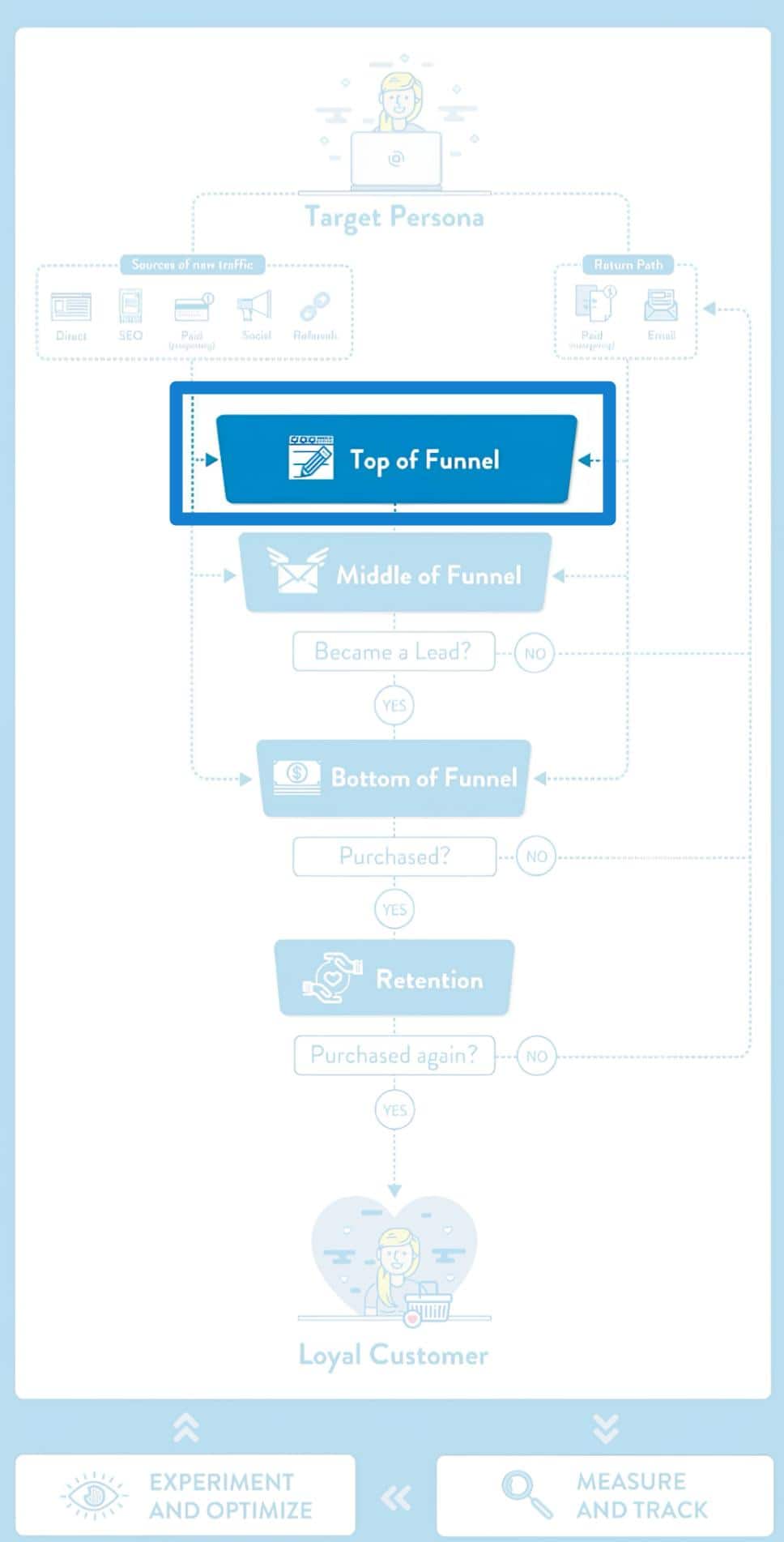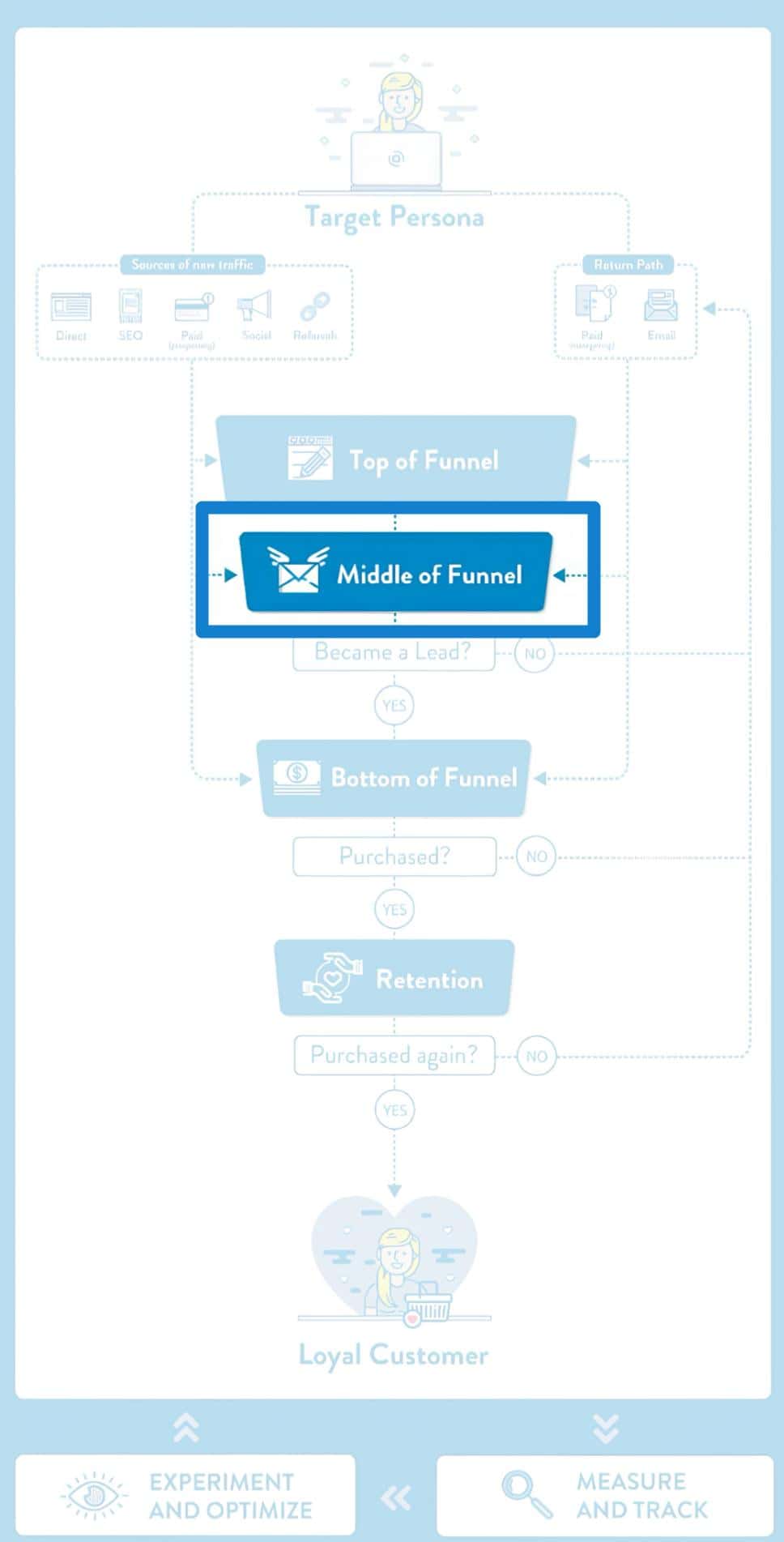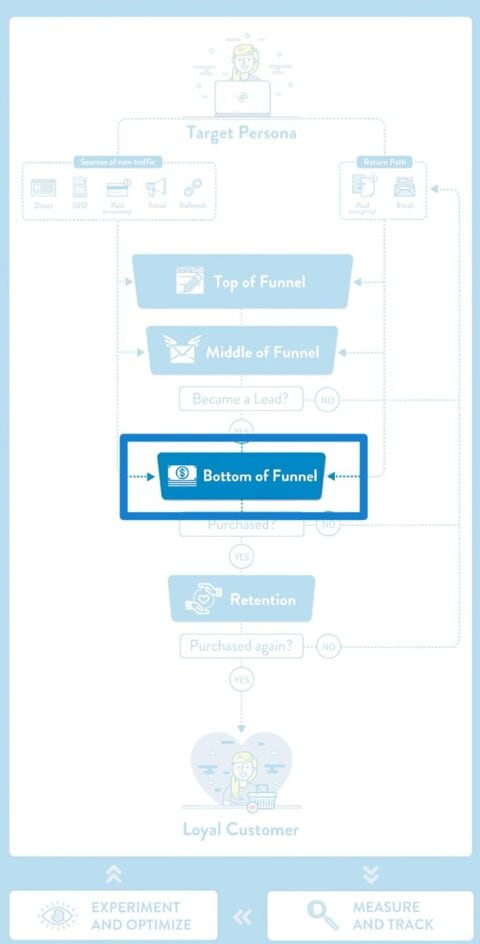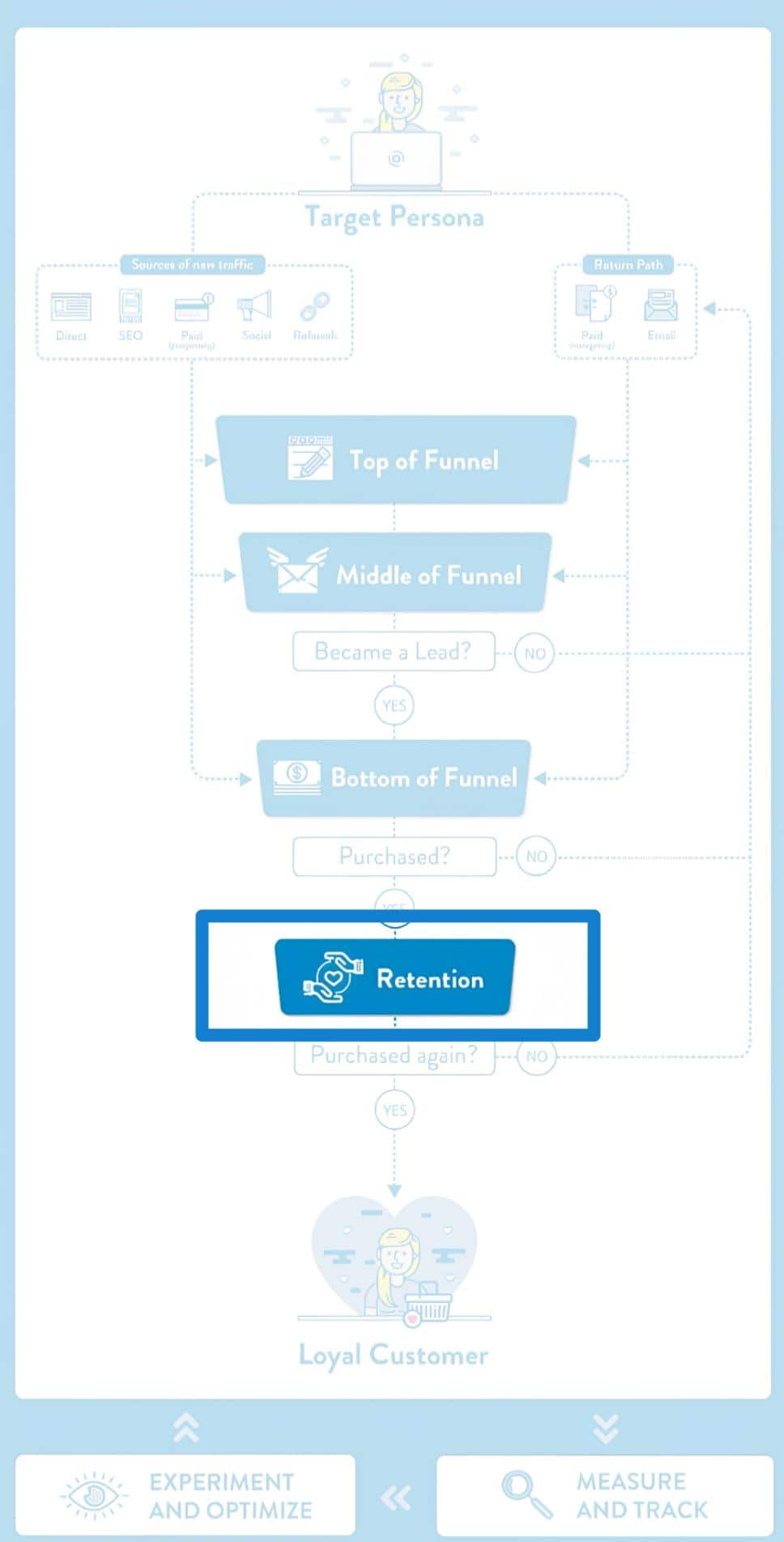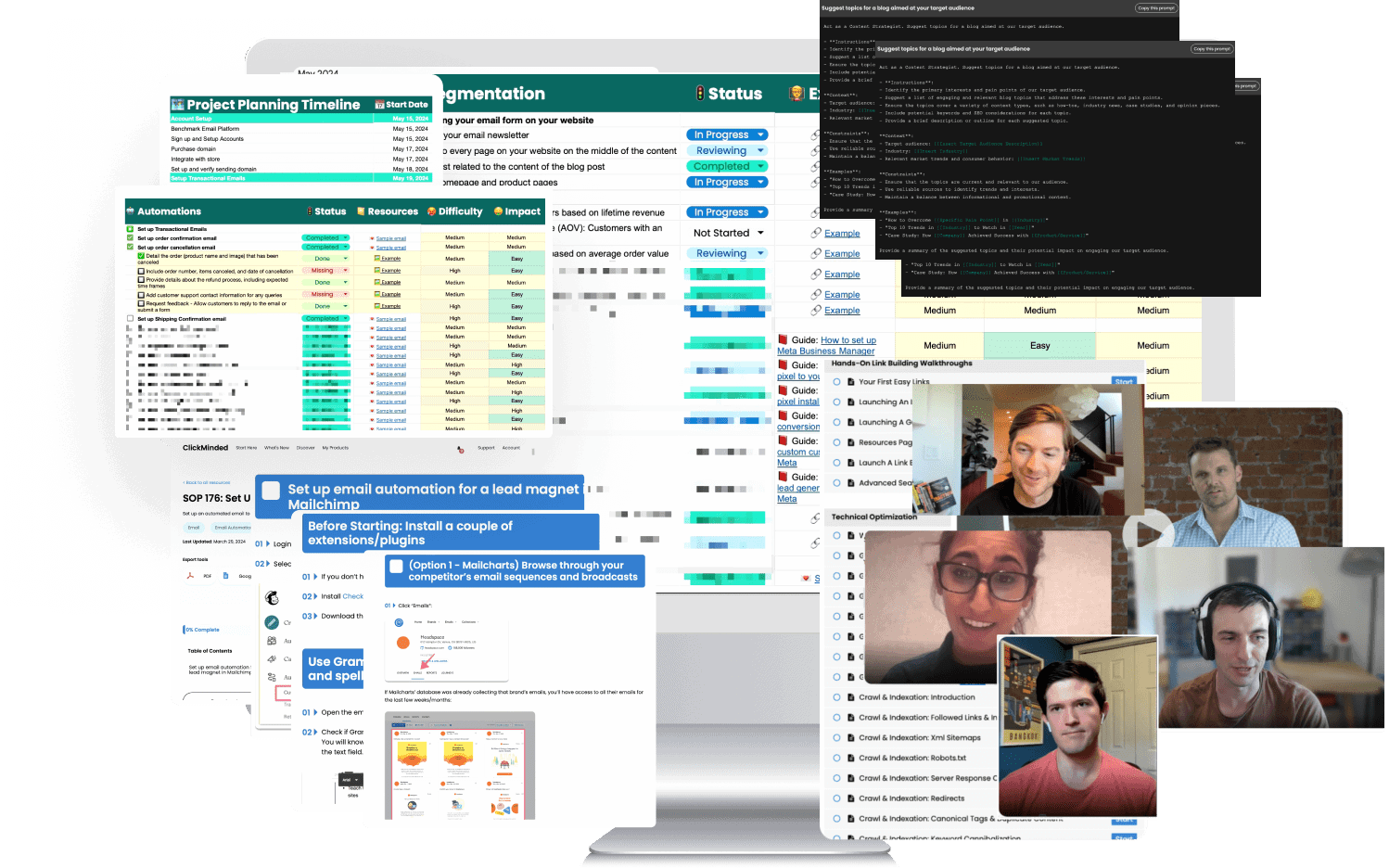📈
Your Goal at the Retention Stage: Increase Lifetime Value
In the retention stage, your marketing persona is already a customer of your product. Your objective is to increase the value you can extract from them directly by generating repeat purchases, upsells, or reducing churn; or indirectly by improving brand image or promoting referrals.
📝
Content Marketing
The objective of the content you'll create at the retention stage is to keep your existing customers happy by providing ongoing value (even after purchasing.)
Content ideas:
Monthly newsletter featuring exclusive updates about new menu items and upcoming events to keep customers engaged.
User-generated content campaign: 'Share Your Coffee Story' encouraging customers to post about their experiences at the café.
Blog series: 'Coffee Recipes You Can Replicate at Home' to engage customers even when they’re not visiting.
Loyalty spotlight: Highlighting customers’ stories and their favorite orders to foster a sense of community.
Seasonal coffee tasting events: Inviting loyal customers to experience new flavors and providing feedback opportunities.
What to measure:
Open rates of newsletters
Engagement on user-generated content posts
Participation rates in tasting events
🔎
SEO
At the bottom of the funnel, you'll want to make sure your marketing persona can find all the information she needs to get the most of your product (e.g. knowledge base articles), or to solve any problems that may arise (e.g. support/contact page.)
Keyword ideas:
Customer loyalty program benefits
Best cafés for return visits
Local coffee shop rewards programs
Affordable coffee subscription options
Café ambiance improvement tips for productivity
What to measure:
Customer retention rate from organic traffic
Ranking improvements for loyalty keywords
Traffic to loyalty program pages
🎯
Paid Advertising
At this stage of the funnel, you might choose to be run campaigns promoting of new features, upgrades, or promotions.
Target audience ideas:
[Remarketing] Facebook/Meta Ads: Target previous customers who haven't visited lately, highlighting loyalty program perks.
[Remarketing] Instagram Ads: Feature testimonials emphasizing the community aspect and inviting loyalty sign-ups.
[Remarketing] Google Ads: Search ads targeting terms like 'best coffee shops with loyalty rewards.'
[Remarketing] YouTube Ads: Showcase customer experiences and benefits of the loyalty program.
[Prospecting] Facebook/Meta Ads: Target individuals looking for warm community spots and coffee places.
What to measure:
Click-through rate on remarketing ads
Engagement rates on loyalty ads
📱
Social Media
Retention campaigns on social media revolve around building a sense of community with your existing customers. You'll do a lot of monitoring of brand mentions on social media.
Social media campaign ideas:
Host an Instagram Live Q&A with the baristas discussing coffee tips and encouraging engagement.
Share customer highlights and coffees of the week photos to maintain interest and inspire visits.
Run a customer referral program campaign on social media, encouraging followers to bring friends.
Monitor social media mentions of the café and interact with customers sharing positive experiences.
What to measure:
Engagement rate on community posts
Mentions of the café in conversations
Referral sign-ups from social interactions
📧
Email Marketing
Retention email campaigns will be a mix of educational emails (onboarding, activation, etc), transactional emails (reports, receipts, reminders, etc), and promotional emails (upgrades, upsells, etc.)
Email marketing campaign ideas:
Monthly performance report for loyalty members showing their rewards and progress.
Exclusive members-only event invitation email, such as coffee tastings or special brewing classes.
Flash sale email for loyal customers offering them discounts on popular menu items.
Personalized thank-you emails after additional purchases encouraging more visits based on past likes.
Feedback request email after visits, connecting with customers on how to improve their experience.
What to measure:
Open rates on loyalty emails
Event attendance rates from invitations
Response rates to feedback requests
🧪
Marketing Experiments
Your retention experiments will have the objective of maximizing lifetime value of existing customers.
Experiment ideas:
A/B test different loyalty program benefits in emails to see which motivates more visits.
Run split tests on promotional emails for best-performing offers to drive further customer engagement.
Experiment with checkout optimization by adding links to the loyalty program to encourage sign-ups.
Test frequency of follow-up emails post-visit to determine optimal timing for return visits.
Conduct customer satisfaction surveys after visits to capture experiences and identify areas for improvement.
What to measure:
Conversion rates from tested loyalty program offers
Customer satisfaction scores from surveys
Engagement levels with follow-up strategies
